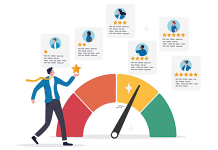
Under normal circumstances, you may have been able to set a competitive but fair price for your company’s goods or services and stick with it.
These are anything but normal circumstances.
In a blog post about pricing in the pandemic for marketing research firm Forrester SiriusDecisions, Lisa Singer says companies trying to rebound from the disruption of the COVID-19 pandemic must look for opportunities to offer low-cost or free offerings. “You won’t often hear me suggest an increase in free offerings, but these are unique times,” she states.
It ties in with her pricing advice for a pandemic — focus on current customers and strengthen that community. Forrester SiriusDecisions research has shown that previous experience with a company is by far the biggest driver for purchasing one offering over another.
“The trust your organization has with your customers is equity that should be nurtured now more than ever before. Ensure your pricing rewards your loyal customers. Offering discounts for their support through advocacy or references shows your appreciation and can help you build a stronger community.”
Financial technology company Square Inc. took a page from that playbook when it waived its standard 2.6% + 10 cents processing fee per transaction for its users in March and April. As Square co-founder Jim McKelvey explained to The Wall Street Journal, “We have a lot of tools that a lot of people need. And a lot of people didn’t know they needed those tools. So we said, ‘Here, they’re all free. And here, take more, and we’re building new things for you.’ Yeah, it’s probably going to benefit the company, but we want our customers to stay in business, so we’re going to give them everything we possibly can.” (It should be noted that Square has not been consistently customer-friendly through the pandemic. A few weeks after WSJ published the Q&A with McKelvey, it reported that payment companies, including Square, PayPal and Worldpay, are making some small businesses, which are already cash-strapped, wait additional days or weeks to access funds deposited in their accounts. They say the move is necessary to protect themselves against possible losses when people who have bought airline tickets, vacation packages and other goods and services seek refunds.)
Add value instead of cutting costs
It’s hard to hold steady on pricing when there is not a lot of buying occurring and you need to hold on to as many customers as possible just to keep your doors open. Robert Fisher, a business professor and chair of the University of Alberta’s business school, says the normal rules don’t apply, but companies should avoid slashing prices. However, that doesn’t preclude changing your pricing structure. For example, if your clients pay an annual fee for your service, you may consider offering monthly payments instead. A smaller per-month fee could appeal to customers with tighter monthly budgets.
In a blog post for FBC, a Canadian tax consultant for small businesses and farms, Fisher advises companies to look for ways to add value rather than cut prices. Rather than slash prices, many companies are first trying to add value to existing pricing structures, he says.
Does it ever make sense to cut prices? In the same blog post, Abhirup Chakrabarti, an associate professor and Distinguished Faculty Fellow of Strategy at Queen’s University’s Smith School of Business, says price reductions make sense when inventory isn’t moving. If you’re sitting on products that aren’t selling, consider bundling or heavily discounting those items to generate some much-needed cash. It’s also important to know your customer. If you think discounting products could help your financially struggling clientele, then reducing prices could build goodwill and keep those customers coming back when things return to normal.
Good data leads to good pricing decisions
“Data is the best antidote against fear and panic. It provides guardrails, guidance, and insights that lead to better decision-making and, in the case of pricing, preserving margins,” states Louis Columbus, who writes about technology and social innovations impacting businesses.
“The more integrated accounting, finance, production, sales and service data, the better the pipeline, backlog, order, margin and revenue decisions every business will be able to make,” he writes for Forbes.com. “The more effective the commercial analytics, deal intelligence and deal price guarantee applications, the more they’re able to choose the best possible pricing strategy during chaotic times.
“Knowing in real-time how supplier costs, delays and unforeseen events impact revenue is a must-have now,” Columbus continues. “Real-time data integration and the speed it delivers is a must-have feature of any pricing system to take on and overcome the many challenges this pandemic has created. Having an intelligent pricing strategy that can quickly interpret, recommend and act on pricing and margin insights will save more companies in this pandemic than the severest price cuts ever will.”
Run, don’t walk, away from engaging in price wars with competitors, Columbus says. “If you’re quoting to a customer who wants to drive your price to the floor or lower, would you take their business in better times? No. Let them go to competitors who are willing to sacrifice margin.”
After speaking with almost a dozen U.S.-based manufacturers in late March, Columbus says he learned that cross-sell, upsell, renewals, win back and new customers are the five most proven selling strategies during the pandemic.
4 smart steps
Although the shock to sales is widespread, companies are wrestling with different challenges. There is no single approach that serves B2B sales and marketing teams across the board. In a report about navigating the COVID-19 crisis, McKinsey & Company offers these important things to get right:
1. Take a through-cycle view of customer relationships. Reinforce trust by tracking key customers’ evolving needs and standing by and defending them during their toughest times. Help the sales team tailor offerings and contracts to new situations and strengthen value-proposition communication. Providing incentives for loyalty can also strengthen relationships while decreasing incentives to switch to a competitor.
2. Strengthen value-focused messaging. The most effective suppliers will show empathy and be able to explain how much value they provide compared to the next-best alternatives. The sales force may need updated training in negotiation, value selling and pricing. If demand is slack and in-person sales calls are not feasible, this may be a good time to reinvest in skill building. Many companies are finding that focused sales training, such as in handling objections and communicating value propositions, can be delivered effectively on a video-conferencing platform.
3. Create “flex” in pricing. Rather than lock in long-term, highly discounted arrangements that might impact the business in the recovery, outperformers will explore ways to unbundle offerings, offer one-time promotions, flexible payment terms, credit for future purchases or other techniques that align the offer or pricing architecture to near-term needs while providing flexibility for the future.
4. Establish a commercial “value council.” A cross-functional team or war room can take a long-term view to avoid panic reactions and develop clear guidelines and objectives for the commercial team. The council can steward large and strategic deals and oversee execution, speeding deal review for impacted segments and maintaining discipline. By regularly interacting with sales teams across the business, this cross-functional team can gather up-to-the-minute details about changes in the marketplace — critical information in the fog of the crisis.
Content check
Lisa Singer of Forrester SiriusDecisions implores businesses to create strong content to support pricing. Sales reps will be challenged more than ever in the new environment. Help them by making your value story clear. If you don’t have a strong batch of case studies in a polished, presentable form, now is the time to put that together. Sample business cases can help prospects sell your offer internally, allowing buyers and sellers to connect the offering to both hard and soft economic benefits, and pave the way for an easier sale.
In his WSJ interview, Square’s McKelvey said businesses that already are at risk of being commoditized need to be doubly aware of being too quick to raise or cut prices. “I’m super dependent on my cable company right now. They could triple their price. They could also give it to me free. They’re doing neither because if they’re too rough with me, I’ll switch.
“The flipside is companies that have loyal customers,” he adds. “This is a golden time to be as generous as you can because people are in need. And the best way to make a friend for life is to be there in a time of crisis.”
Click on any of the articles below to read more from our special report.
Pricing challenges posed by a pandemic
Is COVID-19 messaging fatigue real?
COVID-19 accelerates expected B2B sales trends
Pandemic selling by the numbers
Managers in the recovery can focus on change
4 tips for more engaging remote sales presentations





